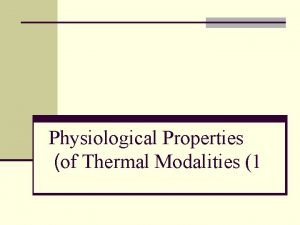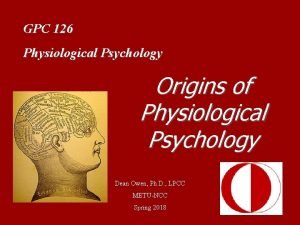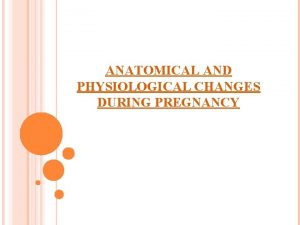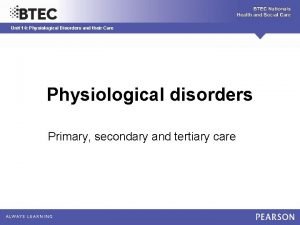PHYSIOLOGICAL STRATEGIES Physiological strategies is the focus of






- Slides: 6

PHYSIOLOGICAL STRATEGIES

Physiological strategies is the focus of two elements- the removal of metabolic by-products and a nutrition plan to replace lost fluids and energy rich nutrients.

COOL DOWN Is exercise to gradually reduce heart rate and metabolism to the pre-exercise state. Elevated body functions such as ventilation rate, blood distribution and adrenaline levels return to normal. Not cooling down can result in blood pooling, causing dizziness, muscle stiffness and soreness. An effective cool-down should consist of 5 -10 minutes of walking/jogging/slow swimming.

HYDRATION Fluid loss varies from one individual to another and is influenced by altitude, temperature, exercise intensity, exercise duration and sweating. Thirst is an indicator of dehydration as fluid losses can advance more rapidly than the thirst mechanism can adjust. Extended exercise can result in the loss of 0. 51. 5 (2%) kilograms of fluid per hour.

QUESTION TIME How can nutrition and recovery strategies affect performance? 5 marks

The ability to recover after competition and training is essential in ensuring that optimal performances can be maintained. Recovery can involve a range of strategies. When selecting the most appropriate recovery strategy coaches and athletes need to apply the principle of specificity to meet the demands of training and competition. Physiological strategies aim to conserve body fluid levels, replace fluid as well as reduce and remove the by-products of exercise. Neural strategies such as hydrotherapy and massage assist in waste disposal within muscle. They aim to minimise the effects of fatigue and allow for continuation of the training program. Cryotherapy uses cold therapy in the form of ice packs, ice baths and cryotherapy chambers to reduce pain and inflammation and assist in eliminating metabolic waste. Psychological strategies such as relaxation and sleep are as important as physiological strategies in completing total recovery following demanding physical activity. Not all recovery strategies utilised by athletes are supported by scientific evidence.











